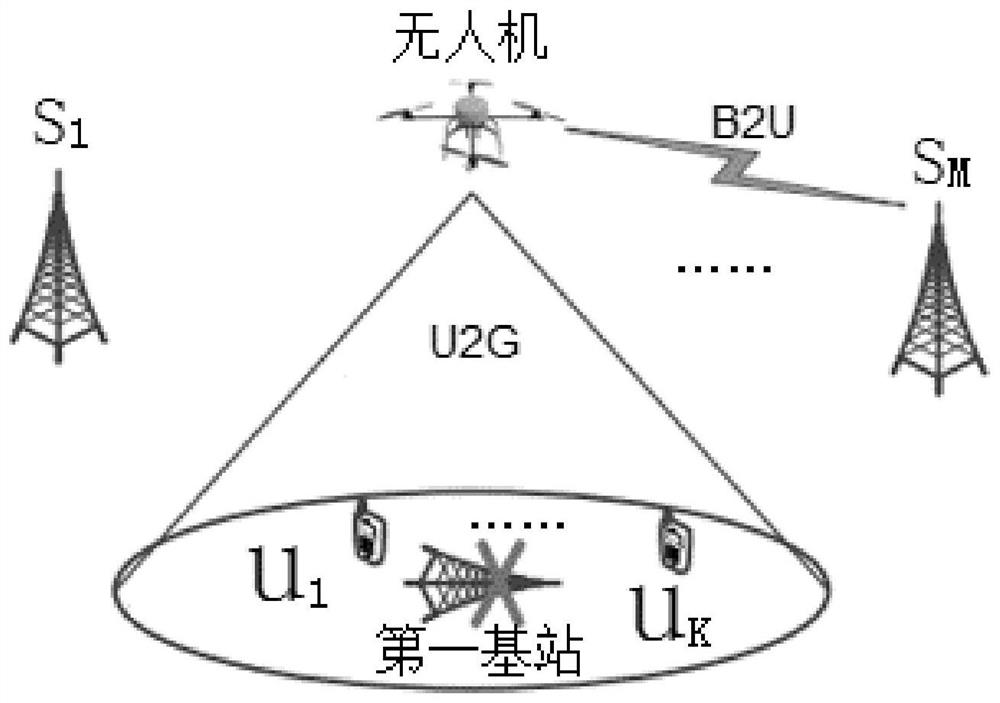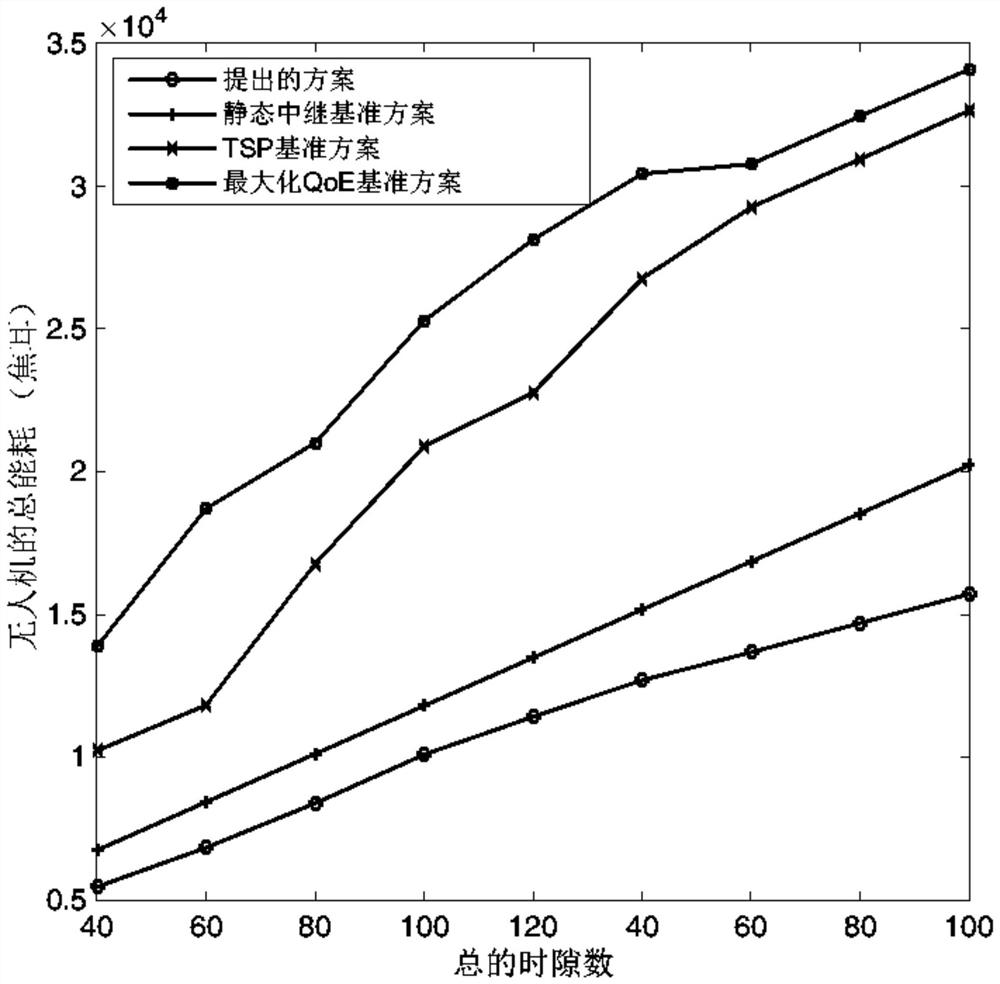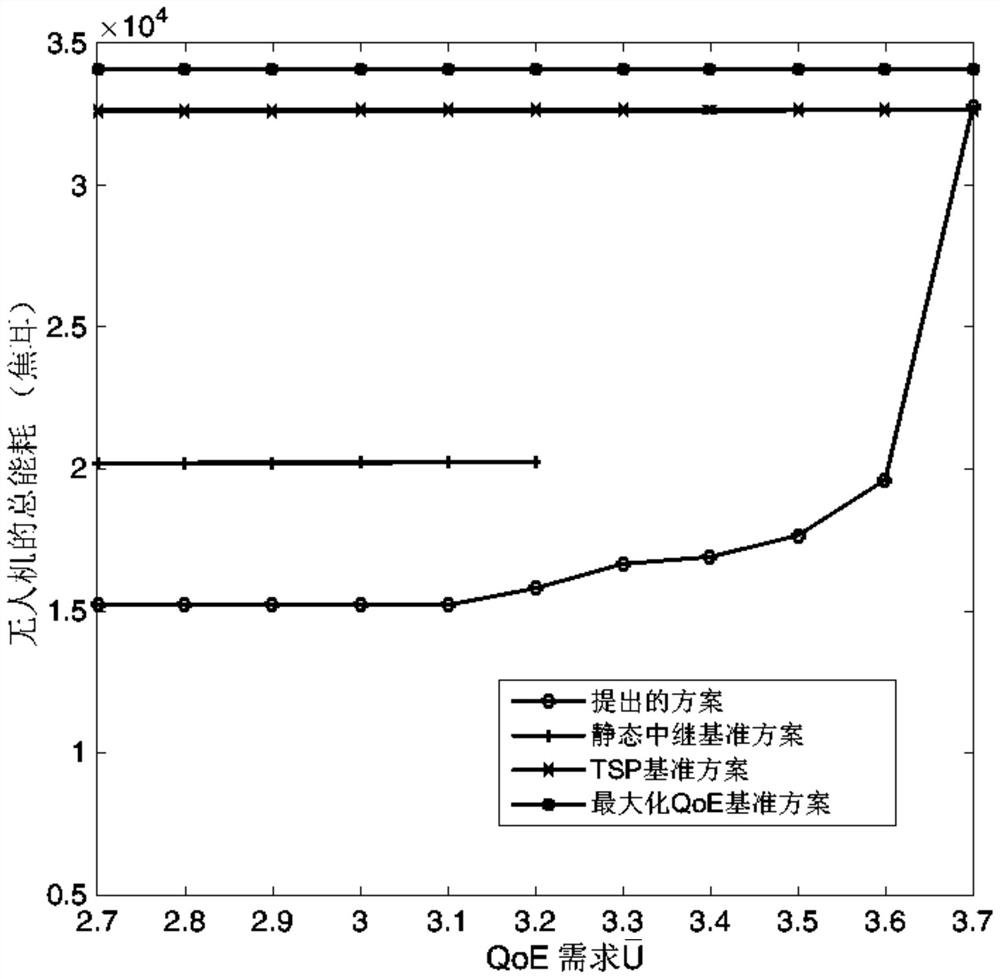Unmanned aerial vehicle video relay system and method for minimizing energy consumption thereof
A relay system, UAV technology, applied in the direction of radio transmission system, transmission system, reducing energy consumption, etc., can solve problems such as increasing the energy consumption of UAVs and increasing the flight distance of UAVs
- Summary
- Abstract
- Description
- Claims
- Application Information
AI Technical Summary
Problems solved by technology
Method used
Image
Examples
Embodiment 1
[0111] 1. System model
[0112] An embodiment of the present invention provides an unmanned aerial vehicle video relay system, such as figure 1 The system structure diagram shown includes the first base station which does not work, and K users U={u in the coverage area of the first base station 1 ,u 2 … u K}, and M normal working second base stations adjacent to the first base station S={s 1 ,s 2 …s M}, and the UAV deployed between the second base station and the user for video relay, K≥2, M≥2.
[0113] In this system, the established first base station is out of service (eg due to damage or maintenance). Such an area may be a remote area where there is no direct connection between other base stations (second base stations) and users. In this case, drones are deployed as a quick solution for wireless access services. Since the rotary-wing drone has the ability to hover over users to provide better video services, the rotary-wing drone is adopted as an aerial relay pl...
Embodiment 2
[0151] Based on the UAV video relay system of Embodiment 1, this embodiment designs a method for minimizing energy consumption of the UAV video relay system, including steps:
[0152] S1. Construct the energy consumption minimization constraint model of the UAV video relay system;
[0153] S2. Decomposing the energy consumption minimization constraint model into a transmission power and bandwidth optimization sub-model, and a UAV trajectory optimization sub-model;
[0154] S3. Using successive convex approximation and alternate optimization methods to solve the transmission power and bandwidth optimization sub-model and the UAV trajectory optimization sub-model, obtain a suboptimal solution satisfying the Karush-Kuhn-Tucker condition as the energy consumption minimization Optimal solution to a constrained model.
[0155] 1. Energy consumption minimization constraint model
[0156] This embodiment aims to minimize the total energy consumption of the UAV in consecutive T time ...
PUM
 Login to View More
Login to View More Abstract
Description
Claims
Application Information
 Login to View More
Login to View More - R&D
- Intellectual Property
- Life Sciences
- Materials
- Tech Scout
- Unparalleled Data Quality
- Higher Quality Content
- 60% Fewer Hallucinations
Browse by: Latest US Patents, China's latest patents, Technical Efficacy Thesaurus, Application Domain, Technology Topic, Popular Technical Reports.
© 2025 PatSnap. All rights reserved.Legal|Privacy policy|Modern Slavery Act Transparency Statement|Sitemap|About US| Contact US: help@patsnap.com



